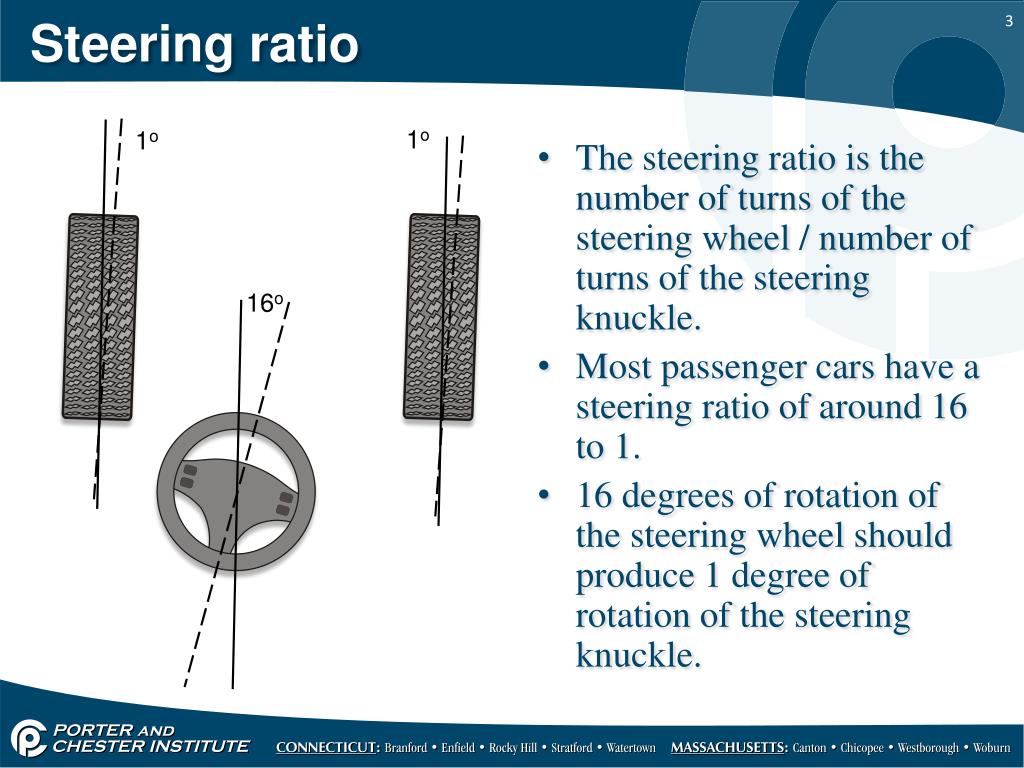Why Don’t Cars Have a 1:1 Steering Ratio?
Steering Effort and Driver Comfort
The main reason cars don’t have a 1:1 steering ratio is to reduce steering efforts for drivers and improve comfort. With a direct 1:1 ratio, even slight turns of the steering wheel would sharply change the vehicle’s direction, requiring great strength and focus from the driver. Larger steering ratios allow drivers to turn the wheel multiple times to execute turns while maintaining a comfortable grip and casual riding experience.
For heavier vehicles like large SUVs and trucks, the steering forces needed to turn the wheels becomes substantial. Ratios of 21:1 to 24:1 are common, letting drivers smoothly steer with moderate effort. This ensures safety and comfort on roads which may include bumps or potholes that could disturb direct 1:1 control.

Handling Light Vehicles
Smaller cars could potentially utilize a closer 1:1 ratio since less force is required to turn the wheels. However, problems would still exist. The steering would become overly sensitive, where minor steering inputs like accidental bumps could cause the vehicle to swerve or fishtail. Even with advanced power steering, fully committing both hands to the wheel would be necessary for safe and predictable handling. Casual one-handed driving would become too risky.
Stability at High Speeds
At highway speeds, inputs through a 1:1 steering system could displace the vehicle between lanes in just seconds. Road conditions out of the driver’s control like uneven pavement, debris, or wandering could suddenly jerk the wheel and put the car into an uncontrolled skid. Aerodynamic downforce from rear and front wings could help provide stability, but regular vehicles are not designed for that level of precision.
Driver Expectations and Habits
Most drivers are used to the characteristics of modern steering ratios from decades of experience. An immediate switch to pinpoint 1:1 control could confuse and destabilize habits, potentially causing accidents as operators adjust. Introducing novel steering interfaces also risks surprising and overwhelming typical users accustomed to the conventions of road vehicles.
Specialized Applications
While 1:1 ratios are impractical for road cars, they can work well in purpose-built machines designed around that parameter. Go-karts and motorcycles leverage their lightweight agility to precisely maneuver through tight corners and swift reactions. Racing cars benefit from ultra-sensitive handling to shave milliseconds on lap times. However, public roads present more variables requiring forgiving control designs.
Legacy Design Constraints
Early automobiles lacked power steering, necessitating high ratios for manual operation. Established steering infrastructures, muscle memory habits, and production standardization make radical changes difficult. Evolution tends to optimize familiar frameworks incrementally rather than sudden paradigm shifts. New interface ideas may one day enable improved ratios, but gradual adoption allows learning safe usage.
In conclusion, steering feel, weight impacts, stability concerns, driver expectations, and historic development paths all contribute to ratios beyond 1:1 becoming the automotive industry standard. While closer control is possible, public roadway risks demand balance between responsiveness and forgiveness in mainstream vehicle handling characteristics.
